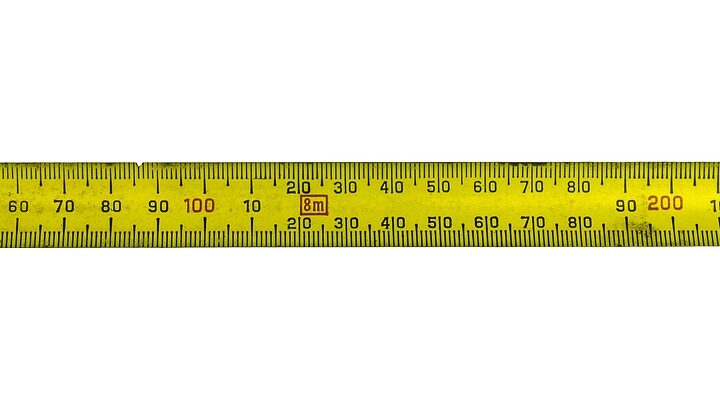How to Navigate Between Different Measurement Systems Without Getting Lost
November 12, 2024

Understanding measurement systems is an essential skill in our increasingly interconnected world. Whether you’re a student, a professional, or just a curious individual, you often find yourself needing to convert between different measurement systems like metric, imperial, and others. Navigating these systems can be daunting, especially if you’re trying to get precise measurements in contexts such as cooking, engineering, or traveling. This comprehensive guide will help you understand the differences between measurement systems, provide useful conversion tips, and outline practical applications to help you navigate seamlessly.
1. Overview of Measurement Systems
Before diving into conversions, let’s define what we mean by measurement systems. In general, a measurement system is a method of quantifying physical quantities such as length, weight, volume, and temperature. The two most common systems today are:
- Metric System: Used by most countries worldwide, the metric system uses standard units like meters (length), liters (volume), and grams (weight). It is based on decimal multiples and a systematic approach to measurement.
- Imperial System: Primarily used in the United States, the imperial system uses different units like inches, feet, gallons, and pounds. This system is less standardized than the metric system, leading to various conversions and calculations required when trying to compare measurements.
Understanding how these measurement systems differ plays a key role in successfully navigating between them.
2. Key Differences Between the Metric and Imperial Systems
The major distinction between the metric and imperial systems can be broadly categorized into types of units employed and conversion practices:
- Units: Metric units are based on powers of ten, making them easier to convert. For example, 1 kilometer equals 1,000 meters, and 1 liter equals 1,000 milliliters. Meanwhile, in the imperial system, a foot equals 12 inches, and a gallon equals 128 fluid ounces. This lack of consistency can make conversions cumbersome.
- Conversions: The metric system conversions usually involve simple multiplication or division by 10, making the process intuitive. In contrast, imperial conversions often require remembering a variety of numerical relationships, which can feel overwhelming without practice.
By grasping these differences, you will find it easier to make conversions without getting lost in numbers.
3. Common Conversion Factors
When it comes to navigating between measurement systems, remembering common conversion factors is crucial. Here are some of the most frequently used conversion factors:
- Length:
- 1 inch = 2.54 centimeters
- 1 foot = 0.3048 meters
- 1 yard = 0.9144 meters
- 1 mile = 1.60934 kilometers
- Weight:
- 1 ounce = 28.3495 grams
- 1 pound = 0.453592 kilograms
- 1 ton (US) = 907.185 kilograms
- Volume:
- 1 fluid ounce = 29.5735 milliliters
- 1 cup (US) = 236.588 milliliters
- 1 gallon (US) = 3.78541 liters
These factors will come in handy when you’re faced with the need for quick conversions in day-to-day activities.
4. Practical Applications of Measurement Conversions
There are situations in daily life where you will need to convert between different measurement systems. Here are a few examples:
- Cooking: When following a recipe, you may find it listed in grams and need to convert to ounces or cups. This is common when baking where precision can significantly affect the final product.
- Traveling: If you’re traveling to a country that uses metric measurements, understanding conversions will help you gauge distances, speed limits, and temperature settings more effectively.
- Education: Students often encounter challenges in science or mathematics classes when learning about measurements. Understanding how to navigate between systems can clarify various concepts and problems.
Being aware of these applications can help you practice conversions in a real-world context, solidifying your understanding.
5. Tips for Mastering Measurement Conversions
To help you navigate measurement systems more effectively, consider implementing these strategies:
- Memorization: While it’s impractical to memorize every single conversion factor, familiarizing yourself with the most common ones can save you time and frustration.
- Use Technology: Conversion apps and online tools can simplify measuring tasks incredibly. Websites and apps can automatically convert measurement for you, which can be particularly useful when in a pinch.
- Practice: The more you practice converting measurements, the more intuitive the process will become. Practice conversions as part of daily activities, such as cooking or calculating distances on a map.
By applying these tips, you will feel more comfortable working between different measurement systems in no time.
Conclusion
Navigating between different measurement systems can seem challenging initially. However, with some practice, a clear understanding of key differences, and familiarity with common conversion factors, you’ll find that switching between metric and imperial systems becomes a much smoother process. Whether you’re cooking, traveling, or studying, these skills will empower you to handle measurements with confidence. Start integrating these tips and tools into your daily routine, and notice how navigating measurement systems becomes second nature.








